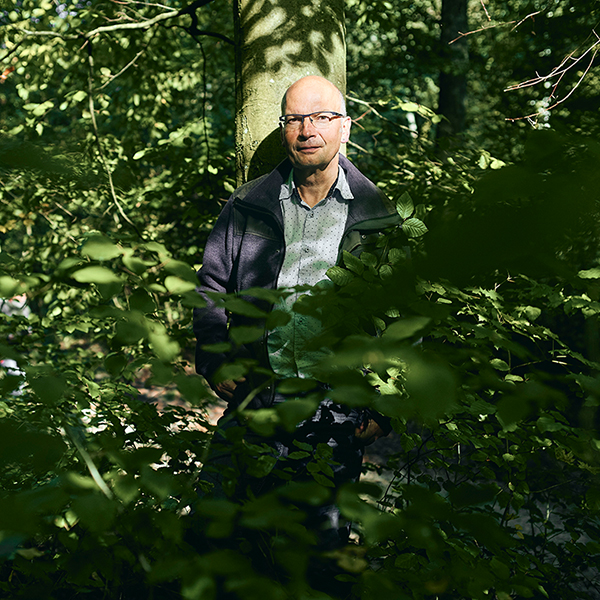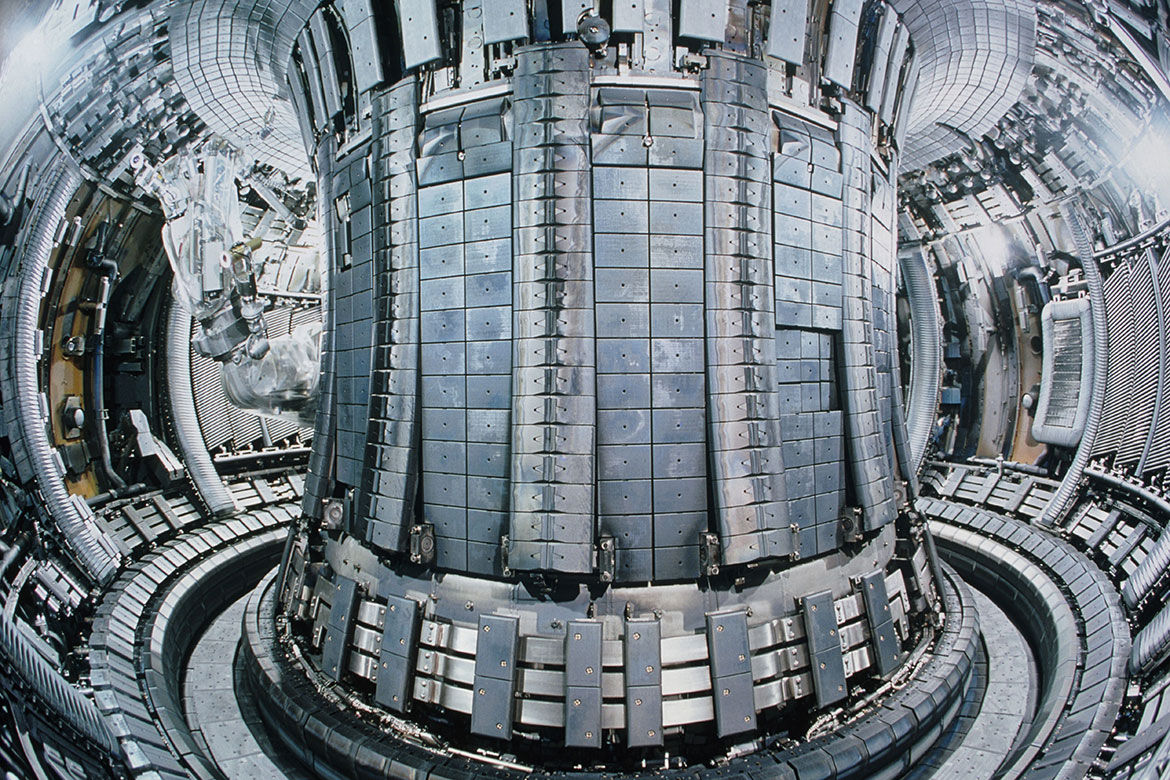Energy
From the triumph of fossil fuels to an emission-free future
It wasn’t always obvious that petrol, diesel and other fossil fuels would win the race against electric motors. But then they became the standard choice in the automotive industry for many years. Today, things look very different. What does the future of fuel look like for cars and planes?

Petrol – ‘liquid gold’ – has endured repeated crises – such as back in the 1970s – but it’s still held its own against electric batteries. Until now. | Photo: Mary Schroeder
One summer’s day in 1888, Bertha Benz set off from Mannheim to visit her mother in Pforzheim. She took Motor Car No. 3, made by her husband Carl. But the journey was too long for just one tank of fuel, and the bottles of benzine she took with her were not enough. Shortly before reaching Wiesloch, the tank was empty. Mrs Benz and her two sons had to push their car the last hundred metres to the town pharmacy on the market square. Once there, she bought three litres of the cleaning agent Ligroin, which was also suitable for use as fuel. That made Wiesloch’s marketplace the world’s first-ever filling station.
The history of fossil fuels thus got off to something of a bumpy start. There was an ongoing, unresolved dispute between the adherents of electric motors and petrol engines. But the batteries that were petrol’s competitors at the time also had a limited range, and electricity was not available everywhere. “Initially, it was still an open question as to which potential fuel source would win out”, says Peter Affolter, the head of automotive engineering at the Bern University of Applied Sciences. “It was only after the invention of the starter motor in 1911 that the triumph of liquid fossil fuels became unstoppable”.
Right now, however, the tide seems to be turning. Extensive electrification based on renewable energies is regarded as a promising solution, while fossil fuels are under attack for being agents of climate change. Researchers across the globe are searching for alternatives. However, fossil fuels are both relatively cheap and can be used to power everything from small mopeds to all manner of vehicles, ships, heating systems, power generators, helicopters, military jets and even long-haul aircraft. “It was fossil fuels that made economic growth on this scale possible in the first place. But at the same time, they have triggered climate change”, says Christian Bach, the head of the Chemical Energy Carriers and Vehicle Systems Laboratory at the Swiss Federal Laboratories for Materials Science and Technology (Empa) in Dübendorf.
So the task before us is immense. Alternative, climate-neutral fuels have to be found for different branches of industry. The most promising candidates need to have high energy density and be easy to transport and store. “Ultimately, it’ll be a matter of striking a balance between energy efficiency, costs, safety and environmental impact, while taking into consideration the special challenges of each individual sector”, says Corsin Battaglia, who’s a specialist in energy conversion at Empa.
It’s therefore no surprise that the shift away from fossil fuels is proving difficult. After all, the latter have become the focus of massive infrastructure with refineries, pipelines and filling stations. But in individual sectors – such as stationary heating – it could be easier to organise a change. “Heat is a low-grade form of energy that can be generated easily from all other energy sources”, says Affolter.
All types of vehicle, however – including planes, ships and trucks – require higher-end energy sources that they have to be able to carry with them. The greater the autonomy of the vehicle – in other words, the range it has to travel – the greater its power requirements, says Affolter. A construction machine thus needs more energy than a small car. And the more relevant the total weight of the vehicle is to its function, as is the case with aircraft and ships, the more restricted is its choice of alternative fuels. Kerosene-powered engines in aviation, for example, are difficult to replace with electric motors because the latter don’t produce enough thrust.
E-fuels: compatible, but not very efficient
In private transport, however, the proportion of electric cars is increasing. Innovative lithium-ion batteries have made possible the same kind of mobility that we get from combustion engines. But there’s still resistance to this shift to electricity, and the EU’s political decision to end new sales of combustion engines by the year 2035 has become the subject of controversial debate. Politicians have been eulogising so-called ‘e-fuels’ and other synthetic fuels as possible alternatives (the ‘e’ stands for ‘electrically produced’). These are artificial, liquid fuels that are produced in a climate-neutral manner using renewable electricity, though their complex, multi-stage production processes are usually highly energy-intensive. The same applies to synthetic fuels made from plant waste – e.g., when biomass like old cooking oil is combined with hydrogen to create diesel. This hydrotreated vegetable oil (HVO) is already on the market. The advantage of biodiesels is that they are compatible with existing transport chains and storage infrastructure.
This concept seems plausible at first. But the efficiency of these e-fuels is significantly lower than is the case with electric drives. They are also more expensive than petrol made from fossil fuel. This is partly because their raw materials – water and CO2 – are chemically far removed from the petrol we know. Experts, including Affolter, are urging caution in dealing with this new resource: “Liquid fuels, regardless of whether they are produced from renewable sources or from fossil fuels, are valuable and far too precious to be used where good alternatives already exist today”.
Artificial fuels can be very useful in terms of climate protection when there are no alternatives available. Christian Bach sees potential applications in commercial vehicles and passenger cars that have to cope with high mileage, as these are in some cases difficult to convert to electricity. E-fuels are also needed for air transport, high-temperature industrial processes and international shipping. As part of the reFuel.ch consortium, Empa is working with some twenty partners in industry and commerce from Switzerland and Oman to evaluate the possibility of producing sustainable fuels and combustibles from renewable sources in desert regions.
Experts believe that there’s one more important field in which e-fuels might be used. They could store surplus energy from renewable sources in the summer. When necessary, these fuels could then be burned in the winter to generate electricity – in gas turbines, for example. Such a dual use is possible because substances such as hydrogen, methanol, methane and ammonia are good at storing energy. But gases have to be stored and transported either under high pressure or in liquid form for them to remain economical. And this always results in the loss of some of their energy.
The future’s mixed
When you consider the details, the situation gets complicated. Both ecological and economic factors are relevant when deciding whether it’s more advantageous to use surplus energy in the summer months for long-distance trucks and industry, or to store it for electricity generation in the winter. What’s clear, says Bach, is that most of these e-fuels would have to be imported from countries that have a lot of unused wind or solar energy. Many experts agree that it’s important not to play off individual alternatives against each other, but to use different fuels for the most suitable applications in each case.
This is where a previous prime candidate for the energy transition can come into play. Hydrogen was long considered a major competitor to e-mobility. Research is still ongoing into its possible use in fuel cells. Its efficiency of around 31 percent is significantly lower than that of electric cars, but higher than that of e-fuels. Hydrogen could nevertheless still play a major role in the energy transition as an alternative fuel for heavy-duty traffic, buses and even air travel. It could be mixed with ammonia as a propellant for large ships, and used in high-temperature processes such as are common in the steel industry.
“I see hydrogen as a central pillar of our future energy system, especially for electricity”, says Mirko Bothien from the ZHAW School of Engineering in Winterthur. Chemical storage in the form of hydrogen is a good means of balancing out seasonal fluctuations. In the winter, the hydrogen can be converted into electricity by means of gas turbines. Bothien is working on research projects across the EU whose aim is to increase efficiency when converting hydrogen into electricity. He’s also looking to develop new burners for hydrogen and mixed fuels. “We have to remain open to all possibilities”, says Corsin Battaglia. “The future will probably bring a mix of different technologies”.
Christian Bach is convinced that many more innovations are still to come. “One idea that I personally like a lot is charging vehicles by dynamic induction while they’re driving on the motorway”. If charging systems like this could be integrated into road surfaces, even vehicles with small batteries would be able to travel long distances. This would also solve the problem with which Bertha Benz was once faced: finding a filling station. For in this case, it would be everywhere.




